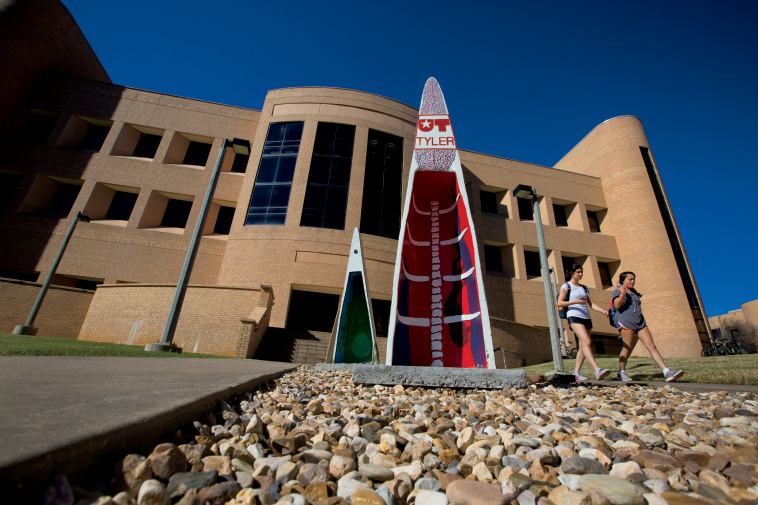Tyler’s College and University Add to the City’s Quality-of-Life Quotient

In addition to helping the region build a highly skilled and educated workforce, Tyler Junior College, Texas College and the University of Texas-Tyler help strengthen the quality of life for the surrounding community with high-quality arts, cultural, sports and educational programs.
“Tyler Junior College is very proud to celebrate the three promises we made to the community, which were to provide a quality education, to provide a great student life and to give back to the community,” says Dr. Juan Mejia, Tyler Junior College provost and vice president for academic and student affairs.
Smart Arts
Mejia says one way the college contributes to the community is through its arts programming. Tyler Junior College hosts a free public video series at the Jean Browne Theatre, for example, that features performances by and commentary of some of the greatest artists of all time. The college also hosts theatrical and musical performances that often incorporate community artists.
“It’s important to us that the students of the college and the community have access to the same caliber of arts and cultural arts that one would find in a major metropolitan area,” Mejia says.
The University of Texas-Tyler partners with the East Texas Symphony Orchestra to bring performances to the campus’s R. Don Cowan Fine and Performing Arts Center, which hosts a Broadway series with shows such as 42nd Street and Pippin, as well as its Braithwaite Intimate Gathering Series with noted musicians. The university’s Arts in Education program schedules performances designed specifically for school-age children.
“These programs give the community an opportunity to attend an event or a Broadway show or see a world-renowned comedian — the types of shows you’d have to go to Los Angeles or New York to see otherwise,” says Dr. Howard Patterson, University of Texas at Tyler vice president for student affairs.
Texas College also hosts performing arts events and art exhibits that are open to the public, and recently renovated a former athletic facility into a music hall for its choir and marching band programs.
Training Grounds
Meanwhile, area youth benefit from summer camps and programs at the colleges. For example, UT-Tyler sponsors a wide range of summer sports camps — from soccer to softball — as well as academic programs that focus on science and engineering. The university also hosts a professional development series for teachers to equip them with techniques for integrating STEM into their curricula.
“The university and the community complement each other,” Patterson says. “Our mission is to educate not only the city of Tyler but the entire East Texas community so that students can become productive members of society and contribute to the betterment, health and welfare of other East Texans.”
The colleges all also play a major role in the region’s workforce development efforts.
One of the biggest conveyors of knowledge in the region, UT-Tyler offers undergraduate and graduate degree programs in more than 50 disciplines. Texas College offers a dozen baccalaureate degree programs in four divisions. Tyler Junior College offers associate degrees and technical training programs for employees as well as dual enrollment that allows students to earn industry certification or college credit while still in high school. TJC also offers continuing education courses for retirees and flexible schedules for working adults.
“There is a direct correlation between workforce development and economic development. That’s why we work with advisory committees that include members from the community to ensure we’re developing programs based on the labor trends and that align with the local needs,” Mejia says. “You will not find programs that are designed to prepare students for employment in West Texas or South Texas. They’re really all focused around our region.”
